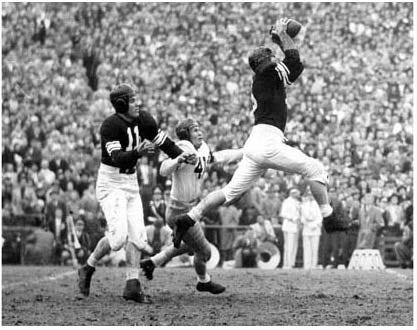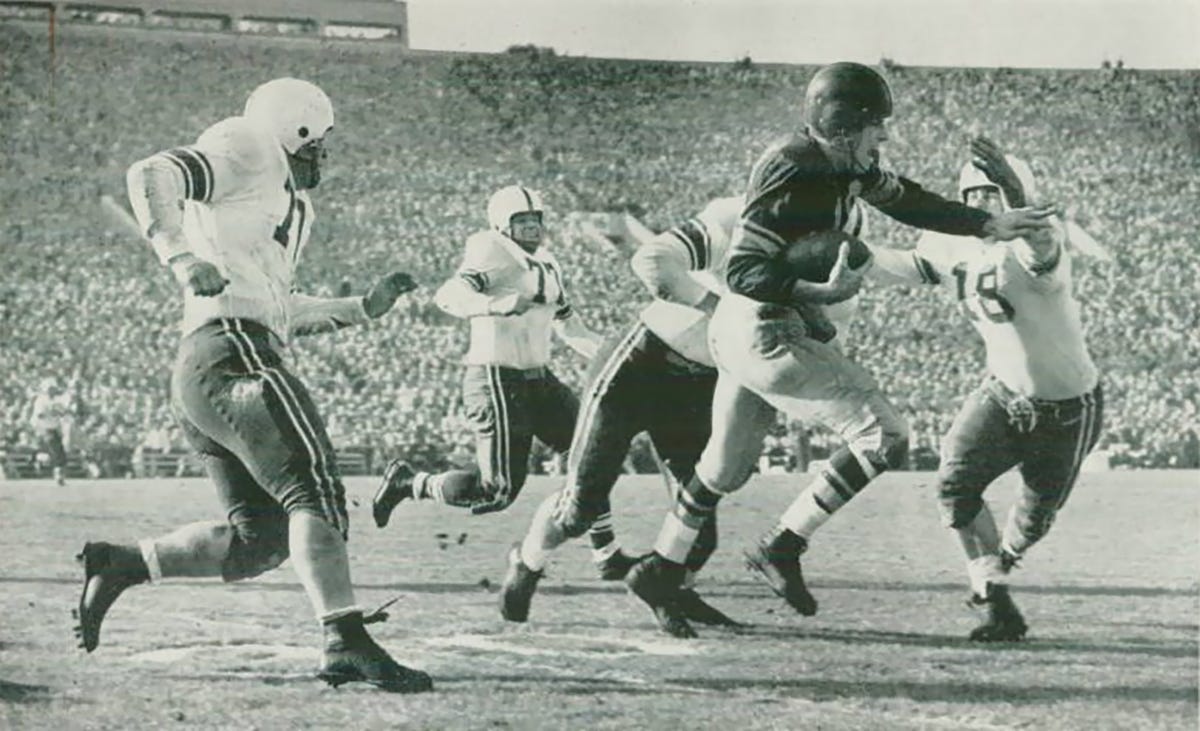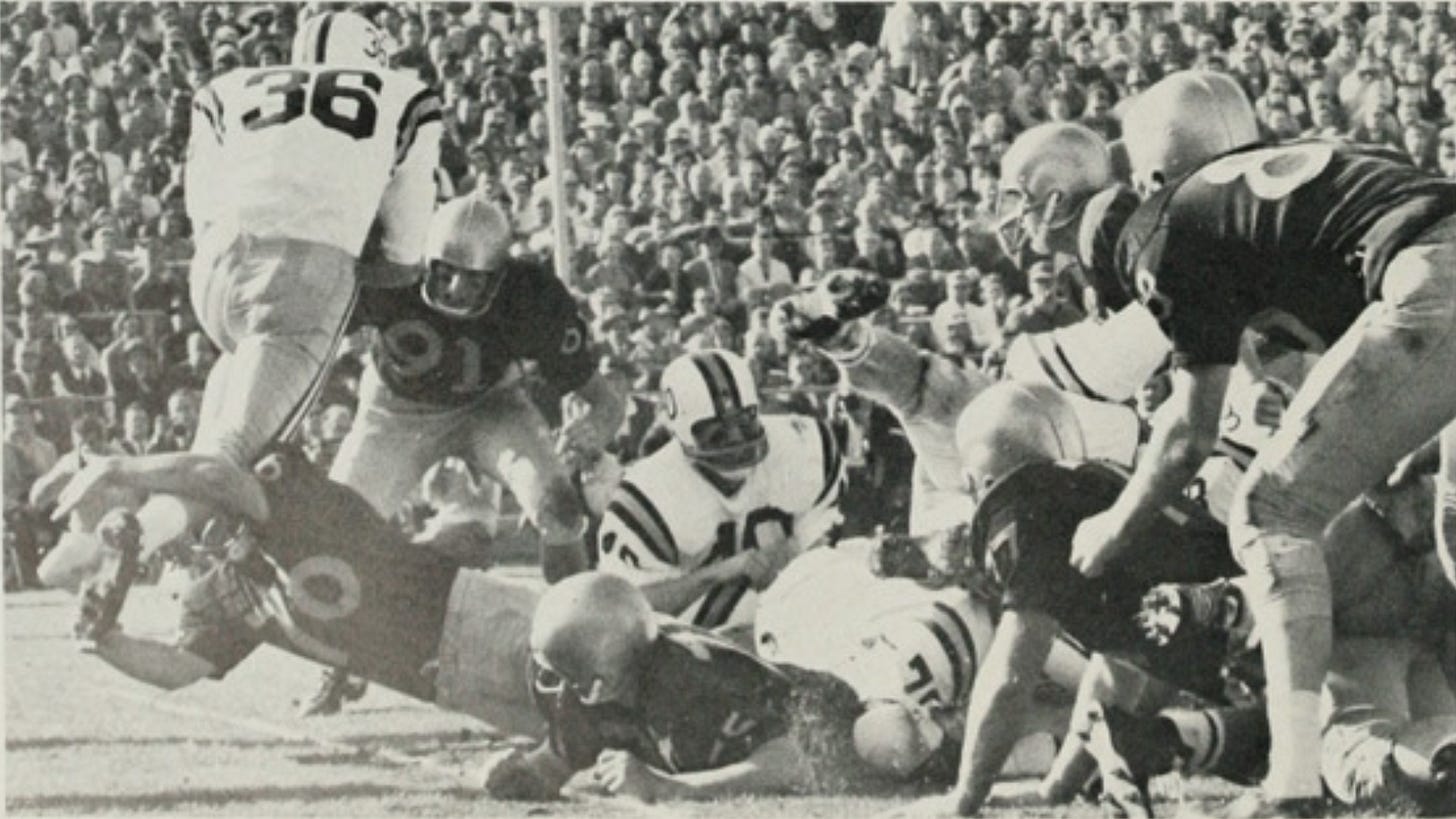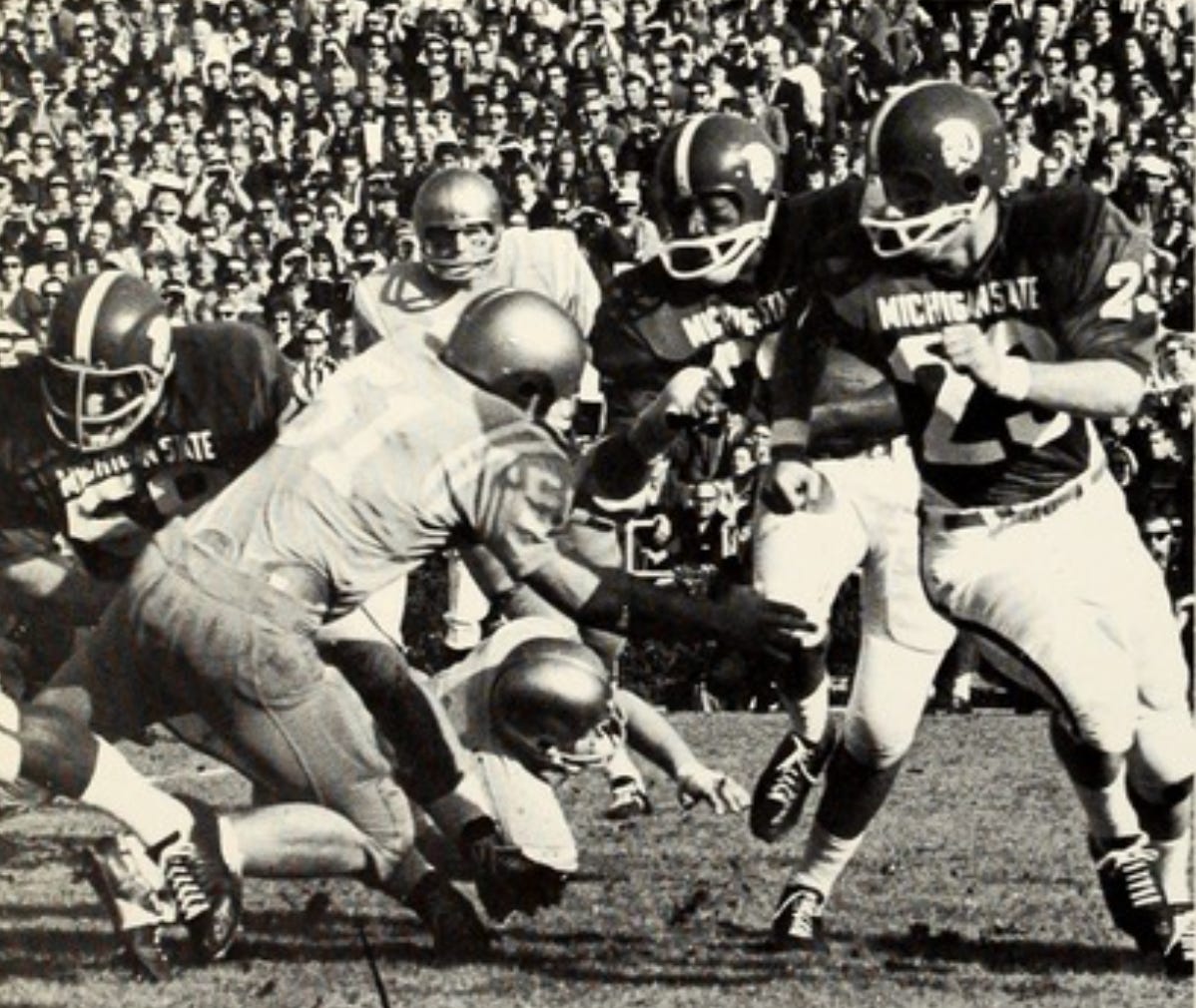Today's Tidbit... Adopting Helmet Logos By Rose Bowl Teams
Following on yesterday’s theme concerning helmet logos, I wanted to look at the time between the 1948 Los Angeles Rams busting out their horns and college teams adding helmet logos. To really determine the adoption curve, I’d have to find images for hundreds of college teams over a few decades, but even I wouldn’t do that, so I took a far narrower path, looking only at the Rose Bowl teams starting in 1949.
By then, the Rose Bowl was the annual matchup between the West Coast trendsetters and the hardworking Midwest industrialists. The Big Ten and Pac 8 had high-profile, well-funded programs capable of adding helmet logos whenever they damn well pleased, so those visiting Pasadena in January should have been a reasonable approximation of the state of college football; so let’s see how it turned out.
1949: Northwestern and Cal did not feature logos.
1950: Ohio State and Cal lacked logos.
1951: The 1951 game saw Michigan play Cal. Michigan had their wings, while Cal had plain blue helmets. While some would argue that Michigan’s wings and straps constitute a logo -and I would not disagree with that argument today- boatloads of teams painted their winged leather helmets in the 1930s and 1940s because NCAA rules required helmets to be painted in contrasting colors to keep the leather helmets from being mistaken for the similarly colored leather ball. Painting the straps and other parts of leather helmets remained common until leather helmets were abandoned in the early 1960s, so the winged look was too stodgy and common at the time to be treated as adopting a logo.

1952: Illinois and Stanford went without logos.
1953: Wisconsin and USC appeared logoless.
1954: Logos felt unwanted by Michigan State and UCLA.
1955: Ohio State and USC did not feature logos.
1956: Logos were no-gos for Michigan State and UCLA.
1957: Things changed by the time Iowa and Oregon State met in the 1957 Rose Bowl due to the National Photographers Association campaigning in 1955 for teams to add TV numbers to uniforms to help photographers, newspapers, and fans identify players. Some teams put TV numbers on their shoulders or sleeves, but most added them to the sides of their helmets because their conferences required one or the other. Iowa and Oregon State had TV numbers on their helmets for the 1956 season and the 1957 Rose Bowl. Alabama, which is the only Power 5 team that still sports them, adopted them in 1957, a year before Bear Bryant made his triumphant return.
1958: Ohio State and Oregon both bore TV numbers on their helmets.
1959: Iowa had TV numbers, and Cal did not.
1960: Washington had plain gold helmets, while Wisconsin had 1) TV numbers, 2) a W on the helmet's front, and 3) a W on the back (not visible in the image below, but it appears in yesterday’s Tidbit). Both teams had TV numbers on their sleeves.
1961: Washington returned in 1961 with plain helmets, while Minnesota brought TV numbers. Both teams had TV numbers on their sleeves.
Due to Substack’s limits on article length and images, I’ll skip images for the next few Rose Bowls and describe the teams’ helmets:
1962: Minnesota had the same helmets with TV numbers as in 1961, while UCLA’s helmets were plain
1963: Wisconsin had the same look as in 1960, while USC had plain helmets.
1964: Washington had plain helmets, while Illinois had TV numbers.
1965: Michigan had its wings and straps, while Oregon State’s helmets were plain orange.
1966: Michigan State was the second Rose Bowl team to bear a logo when they appeared with a Spartan head on either side of their helmets, while UCLA was logoless again. Both teams had TV numbers on their sleeves.
We’ll end the review with the 1966 game since the Rose Bowl teams were clearly slow to adopt helmet logos. Adopting TV numbers on the sides of helmets in the mid-1950s likely slowed the process further. However, few schools today lack logos or do not plaster their helmets with award decals, so the plain plastic helmets of the 1950s are long gone from America’s campuses.
Football Archaeology is reader-supported. Click here to buy one of my books or otherwise support the site.















Fantastic research!
Thanks, James. I have not spent enough time on that site and did not realize how much information is available, which obviously has taken a lot of work.